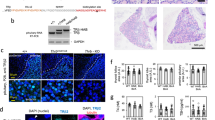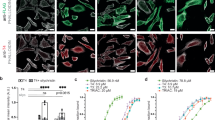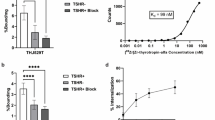Abstract
Paget, Walpole and Richardson1 described some biological effects of 1-α-methylallylthiocarbamoyl-2-methylthiocarbamoyl-hydrazine (‘ICI 33828’) in rats, dogs and monkeys and postulated a selective and reversible inhibition of pituitary gonadotrophic function. Similar results have since been obtained in mice2. In view of these findings we decided to investigate the effect of the compound on pituitary thyrotrophic function.
This is a preview of subscription content, access via your institution
Access options
Subscribe to this journal
Receive 51 print issues and online access
$199.00 per year
only $3.90 per issue
Buy this article
- Purchase on SpringerLink
- Instant access to full article PDF
Prices may be subject to local taxes which are calculated during checkout
Similar content being viewed by others
References
Paget, G. W., Walpole, A. L., and Richardson, D. N., Nature, 192, 1191 (1961).
Brown, P. S., J. Endocrinol., 26, 425 (1963).
Author information
Authors and Affiliations
Rights and permissions
About this article
Cite this article
TULLOCH, M., CROOKS, J. & BROWN, P. Inhibition of Thyroid Function by a Dithiocarbamoylhydrazine. Nature 199, 288–289 (1963). https://doi.org/10.1038/199288b0
Issue date:
DOI: https://doi.org/10.1038/199288b0



